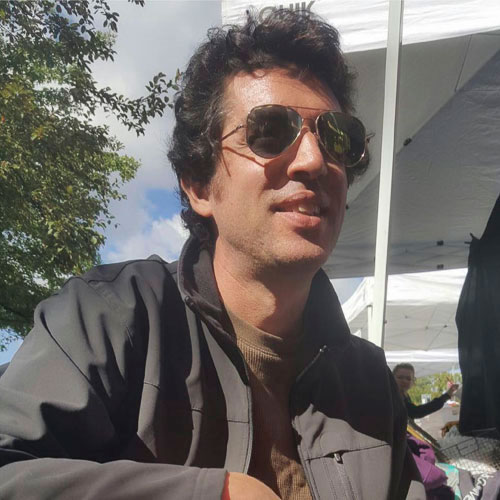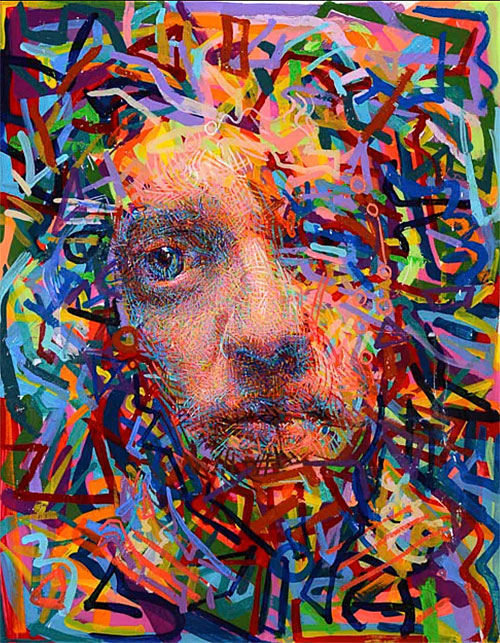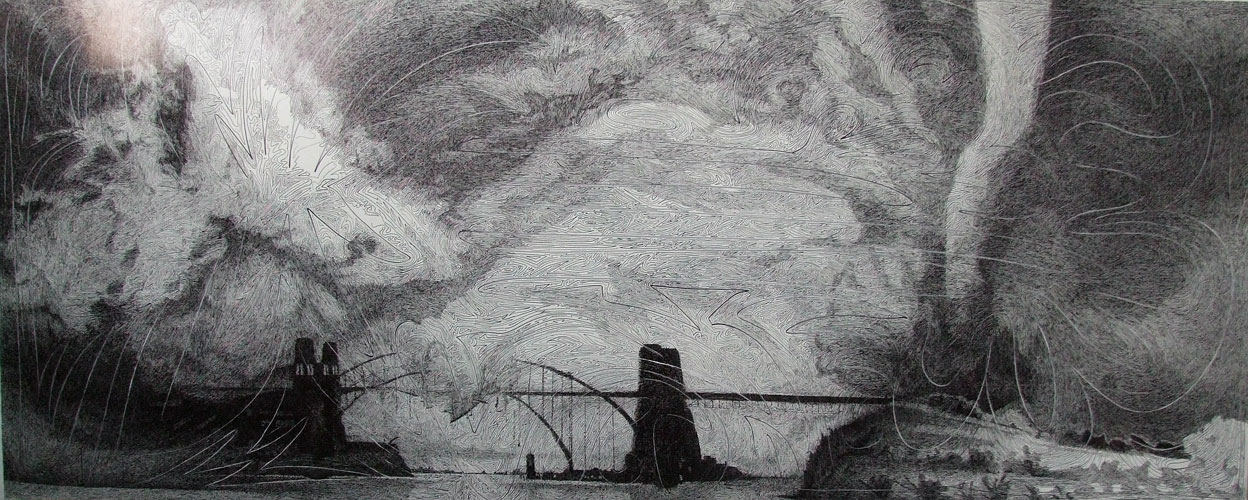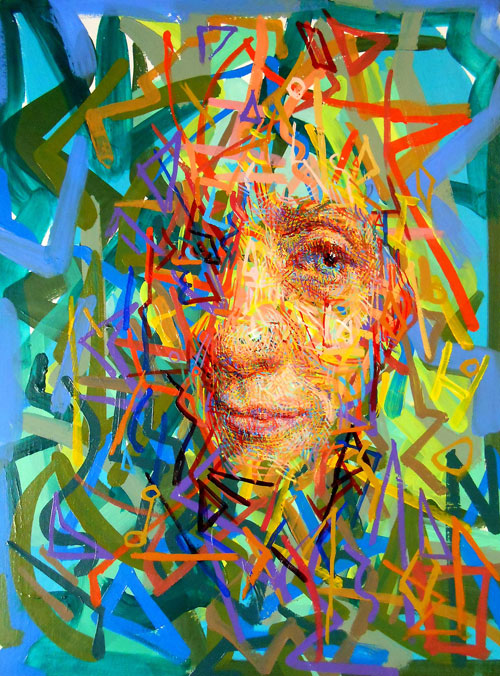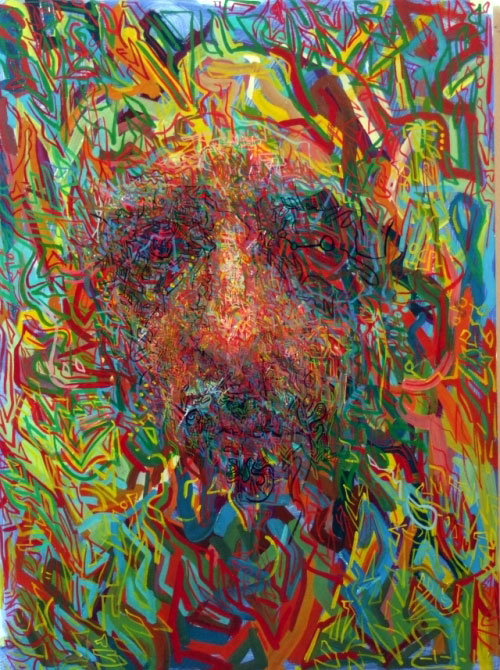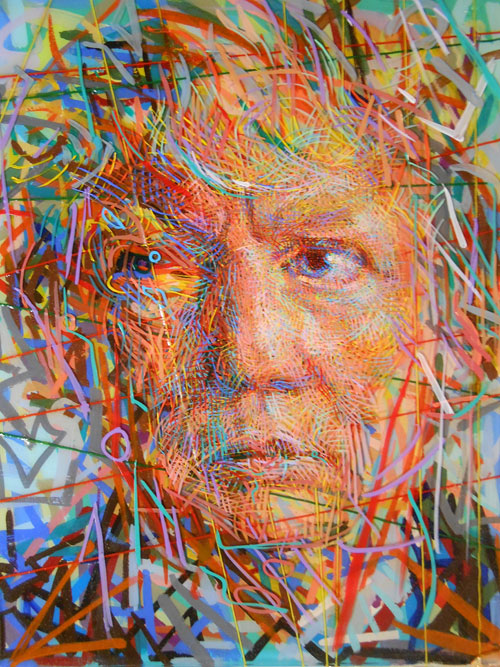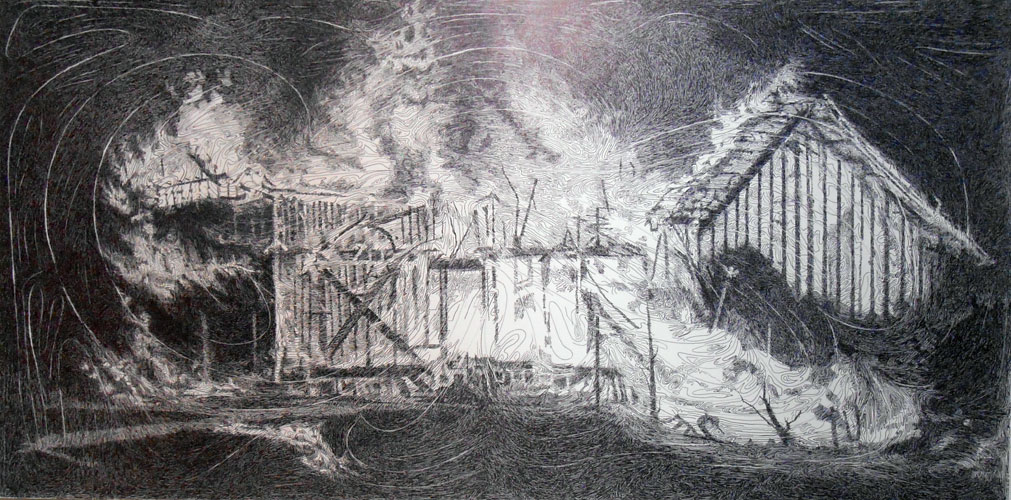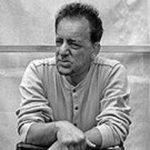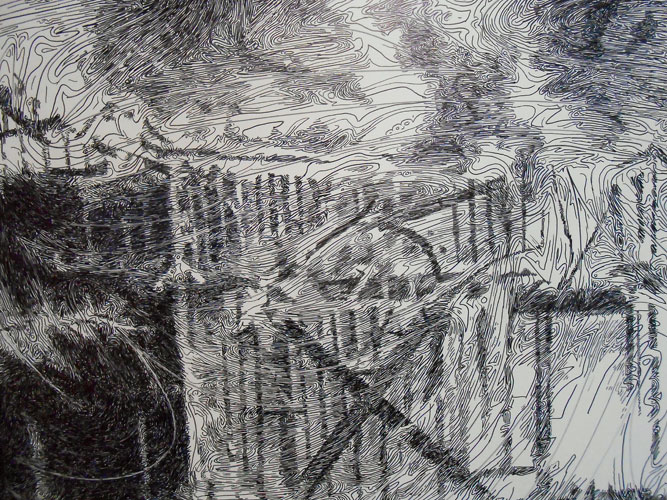Art, // August 31, 2020
John Hampshire — ARTIST
Interview with artist John Hampshire —
1. Who are you and what do you do?
John Hampshire. I am a painter and Professor of Fine Art at SUNY Adirondack
2. Why art?
I’ve drawn and painted almost my whole life. Initially, in my youth, drawing was a way of retreating, and I’ve always enjoyed the solitude of the studio. A lot of my work for the last 25 years has involved painting other people and this has helped me to connect with people through what I do. I’ve always been a bit of an introvert and this has afforded personal, and transformative, meaning to my work.
3. What is your earliest memory of wanting to be an artist?
I’ve been drawing as long as I can remember and have been doing it my whole life. It was a natural evolution to become an artist and teacher for me. I don’t know that I can recall a particular definitive moment that I decided I wanted to be an artist- I just don’t think I seriously considered any other options.
4. What are your favorite subject(s) and media(s)?
I have been making a lot of paintings over the last 15 years with acrylics and drawings with sharpie markers. Typical subjects have been storms or weather events and portraits. I love working in oils and have recently returned to that medium in my work.
5. How do you work and approach your subject?
I start very abstractly, and kind of “work around” building an image. I typically try to maintain an assertive presence of the language of drawing and painting, usually through mark making. I want to process to be as visible to the viewer as the image.
Here is an artist statement from a past exhibition:
The term labyrinth refers to the structure and process through which these drawings are created. I am interested in delicate and dramatic changes of light, whether across forms or through space. Contrasting these transitory qualities is the definite and assertive presence of marks, which both define and interfere with the implied image. Whether in paint or ink, I apply material to a surface with little or no manipulation. Even the paintings are very non- painterly, with no pushing, blending, scumbling or glazing occurring. The process is something I want to remain apparent to the viewer. I want the start, middle and end of the works’ creations to be visible simultaneously.
My drawing process is easier to describe than the painting process due to the more direct, and perhaps singular, nature of the drawing. It starts with a very long line, usually a spiral, of late. I continue to make lines with the “rule” that I do not cross any of the previous lines. The result is a self refining process. At the beginning, the lines or marks are very loosely responsive to the image I am building. As this progresses, the white spaces I have remaining to put lines in become smaller and smaller, and the information that gets built into the drawing becomes more and more specific. This synthesis of process and image, while very time consuming, feels very fluent and natural to me. The act of making these drawings, I imagine, is like jumping into a big vat of molasses; the initial descent in would be fast, but then the submergence would get progressively slower until movement stops, because of the viscosity of the medium.
While the images or initial marks may be energetic in nature, perhaps even violent, these energies are embedded in an extremely meditative process, involving a repetitive and seemingly mindless routine that is comparable to the mantra of sweeping or raking.
John Hampshire
6. What are your favorite art work(s), artist(s)?
Too many to really list- here are a few that come to mind at the moment: “The Lacemaker” by Johannes Vermeer – it’s so abstract and loose yet such a highly resolved image. Lucien Freud, Willem DeKooning, Jerome Witkin, Paul Cadmus, James Siena. My visual interests are diverse.
7. What are the best responses you have had to your work?
Here are two:
• “It doesn’t look like you.”– various viewers
• “John Hampshire is a virtuoso with a brush. …viewers might imagine him handling his brushes like an orchestra conductor who waves his wand with punctuation and prowess. Portrait painters in need of inspiration should see this memorable show.” – 9/15/2002. New York Times. Review by Dominick Lombardi.
8. What do you like about your work?
I like the making of it. Once I’m done with a painting, or its done with me, I kind of get detached from it. I look back at older work and sometimes glean things from that, finding directions that I hadn’t explored yet.
9. What advice would you give to other artists?
If I had to, I’d say stay open to ideas and new directions. It’s easy to find something successful and become stuck in that.
10. Where do you see yourself in 5-10 years?
Working in the studio, likely teaching. I don’t know what my work will be like.
 LINKS —
LINKS —
Website: https://johnhampshire.weebly.com/
Facebook: https://www.facebook.com/john.hampshire.37
Instagram: https://www.instagram.com/hampsj/ —
Pinterest: https://www.pinterest.ca/johnhampshire37/boards/
John Hampshire speaks about his recent artwork
The Grand Design: Paintings of John Hampshire | Art & Text — Mary Kathryn Jablonski | Numéro Cinq
Artist John Hampshire | AHA! A House for Arts
Into the labyrinth. Essay by John Caputo published in catalog for 2014 exhibition “A Circuitous Route”
Just as the Labyrinth that the artist often uses as the signifier of his hyper-graphic works, John Hampshire lures you into a world that is as seductive as the Sirens of ancient Greek lore. Where first your senses are filled with the expectation of straightforward gratification, the viewer soon discovers that s/he has rather been drawn into an experience that encapsulates more than the mere visual delights that are immediately discerned. This is not to make light of the intense mark making that characterizes his work. Even the casual observer cannot but wonder at the imagination that invented these marvels and the patience that carried them out. Perhaps visual art is one of the last arenas in which an unbridled hedonism can still be celebrated. And it is here in spades.
Since the artist so clearly invites you to enter in this fashion, we can only accept and enjoy this outer, straightforward layer. But be reminded that a labyrinth is the antithesis of a simple stratum. It is rather all about the interior, and more apt, the experience of that interior as one is left to search for each successive step. We still may be in our world now, but we are also in the artist’s world, and from this point forward we will need both references to make our way forward with a degree of accuracy. As it is impossible to comprehend the paintings of Piet Mondrian without knowledge of his attraction to the Neo-Platonic constructs of Theosophy, one cannot understand John Hampshire without an awareness of his underlying interest in mathematics. We aren’t talking arithmetic here. Far too few of us in the contemporary world are conscious of the multi-faceted dimensions of Theoretical Mathematics, an arena where Philosophy and the Physical Sciences converge in unexpected ways. There is more to be known than that which is already known, and in this fascination with uncertainty, a certain type of mind is beckoned to that call. Having looked at Hampshire’s paintings and drawings for fifteen years now, and conversing with him at length in subjects far beyond the realm of art, I put forth the hypothesis that herein lies the central core of his work, that which gives it its underlying power, and its ability to hold us well after the initial ‘wow’ factor has faded. Recall that the labyrinth was created not as a game without purpose, but rather to challenge those who entered to discover the hidden pathway to the treasure MJ, 2013, charcoal on paper, 18 x 24 in. Int o T he Labyrinth within. In mythology the reasons for doing so are often deceptive, manipulative, and mischievous. In art, it is not necessarily so. Much more generously, in these works I believe it is the artist asking the viewer to come along with him to see what together you might discover. A key point not to be ignored is that the painter discovers his own experiences in the act of creating them. In his most recent portraits (a core interest and subject) Hampshire unveils a new development that is certain to enrich his already impressive work in this genre. Previously, his paintings of individuals utilized a slow buildup of forms from a controlled beginning with larger brushstrokes, which were gradually covered with increasingly refined cross hatchings carried out with marks that are infinitesimally small.
The process reminded me of the development of images in analog photographs, as they proceeded from indistinguishable patterns into sharp focus, revealing the precise reality of the objects themselves. Most, if not all, of the looser underlying work was covered over. But in these latest portraits it is as if an atomic nucleus has exploded in a frenzy of strokes that can initially overwhelm. A dizzying array of colors and large linear movements dance across the canvas, whirling dervishes that can merely hint at what is to come. I’ve been privileged to see these new paintings in their earliest stages, and it is only upon faith that one believes that eventually they will morph into striking and highly recognizable images of people that the artist knows. To follow the development is delicious, so I urge viewers to do their best deciphering the progressive journey that Hampshire has taken. This will take concentration, but the effort is well worth it. For as stated earlier, as the artist creates the complex pathways in a frenzy of discovery, he simultaneously invites the viewer to join him in that journey. And this makes these images very honest, the accumulated product of searches for an unknowable ending. The promised treasure inside is available for all of us. By their very nature, the Tornado Series images provide an opportunity for Hampshire to really let loose with his mastery of forms, and to explore a freedom unavailable in depicting the human face. The reality of these storms is frightening, the very shape of them projecting a massive force about to be unleashed upon a world that previously appeared to be safe. Tornadoes literally blow that feeling away. Yet the destructive essence of them provides a particular potency for this visual artist, a way to create an atmosphere of deceptive confusion from which something concrete can be coaxed into being. In the safety of creating a picture of this dangerous event, Hampshire is able to paradoxically construct a beautiful array of shapes and colors that further reveal his underlying talents as an abstractionist. In total this exhibition serves as an intriguing moment in the ongoing development of a young artist who is prodigious in his output, uncompromising in his reaction to his own work, and as totally committed to the act of painting as anyone I have known. While delighting in these works, I for one cannot wait to see what comes next.
John Caputo Professor of Art, Curator of Art



